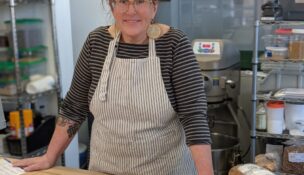National lab reaches out to energy entrepreneurs
The goal is to hasten clean energy innovation
Suzie Romig //July 20, 2016//


National lab reaches out to energy entrepreneurs
The goal is to hasten clean energy innovation
Suzie Romig //July 20, 2016//

Long renowned for research and innovation, the Department of Energy’s National Laboratories are now trying harder to connect directly with the small business community.
The goal is to partner with private entrepreneurs to hasten clean energy innovation and insert more new technology into the dated energy grid. Entrepreneurs working to get their clean energy projects into the marketplace can apply to develop, test or prototype products at the DOE national labs, including inside the $140 million Energy Systems Integration Facility (ESIF) at the National Renewable Energy Laboratory in Golden.
“We know the next phase in the clean energy revolution is to partner more closely with the business community to help them accelerate their technologies and ours to market,” said Bryan Hannegan, NREL associate laboratory director. “We need to integrate clean energy technology into our homes and businesses with high reliability and at a price we can afford.”
The ESIF is a 182,500-square-foot facility with a suite of interconnected, state-of-the-art labs completed in summer 2013. The building is the newest on the 327-acre NREL campus, which employs some 1,700 people.
NREL program manager Sarah Truitt tries to attract private companies to take advantage of the sophisticated labs through the Small Business Vouchers Pilot that launched in September 2015. During round one of the pilot, 33 U.S.-based companies were selected from hundreds of applicants nationwide to nurture their products in the national labs. Boulder-based Element One, a four-person research company, was a first-round recipient.
The company will work at NREL to perfect hydrogen leak detection products for the mass market safety of hydrogen fuel, said William Hoagland, Element One president. ESIF was conceived as a user facility for anything from basic machine shop manufacturing to use of its fully functioning mega-watt scale electric distribution grid, Hannegan explained. Entrepreneurs have access to assistance from hundreds of NREL scientists, engineers and analysts.
“We can be an extension of their R&D team if we do our jobs correctly,” Hannegan said.
Truitt says she likes to help entrepreneurs get past the “so what can you do for me?” question when they think of NREL. Her team also is working to speed up the traditionally slow federal approval process to match the fast pace of entrepreneurial business so that pilot participants move from four-page applications to using the ESIF within a few months.



























